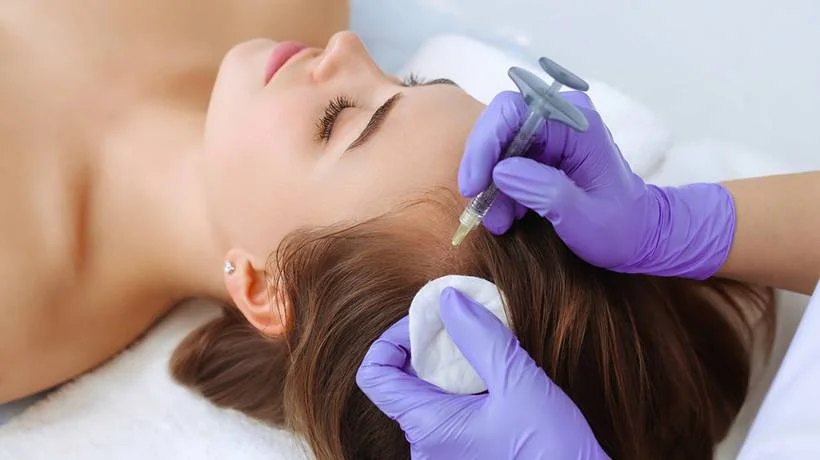Hair loss continues to be one of the most widespread aesthetic concerns for both men and women. In 2025, people are exploring safe, minimally invasive, and long-lasting options to reverse thinning hair and regain confidence. One of the most sought-after solutions today is hair prp treatment, a procedure that utilizes your body’s own regenerative properties to stimulate hair growth without the need for surgery or chemicals.
What Is PRP and How Does It Work?
Platelet-Rich Plasma (PRP) is a concentration of platelets derived from your own blood. These platelets contain growth factors and healing proteins that promote tissue repair and regeneration. In the context of hair restoration, PRP is injected into the scalp where it can stimulate dormant hair follicles, increase blood supply, and encourage new growth.
The process begins with a simple blood draw, much like a routine lab test. The blood is then placed in a centrifuge, which separates the plasma and platelets from the red blood cells. This concentrated plasma, rich in growth factors, is carefully injected into areas of the scalp showing thinning or early balding. Over time, patients often experience thickening of existing hair, regrowth in dormant follicles, and an overall healthier scalp environment.
How PRP Technology Has Advanced in 2025
Compared to earlier years, PRP technology in 2025 is far more advanced, precise, and effective. Clinicians now have access to automated PRP separation systems that optimize platelet concentration while minimizing contamination. Additionally, many treatment centers are using photo-activated PRP, combining it with red light therapy or microneedling for even greater stimulation of follicular growth.
Some clinics are integrating stem cell-derived exosomes with PRP injections to boost outcomes. Exosomes are signaling molecules that help cells communicate and repair tissue, enhancing the regenerative power of PRP. These innovations have made treatments more reliable, less painful, and faster in delivering visible results.
Ideal Candidates and Realistic Expectations
PRP is most effective for individuals in the early stages of hair thinning or those suffering from androgenic alopecia (pattern baldness). It works best when there are still functioning follicles present, even if they’re miniaturized or dormant. People with completely bald areas might see limited results unless combined with other treatments like hair transplants.
Candidates should be generally healthy and free from conditions that affect platelets or healing, such as certain autoimmune diseases or clotting disorders. Also, since PRP is derived from your own blood, there is minimal risk of allergic reactions or serious side effects. It’s important, however, to have realistic expectations—PRP isn’t a one-time miracle cure but rather a series of treatments that build results over time.
Patients typically require 3 to 4 initial sessions spaced a month apart, followed by maintenance sessions every 4 to 6 months. Full results may take 3 to 6 months to become visible, with continued improvement possible for up to a year.
Cost, Downtime, and Side Effects
As of 2025, the cost of a PRP hair treatment session ranges from $400 to $1,200 depending on the clinic, region, and whether advanced techniques like microneedling or exosomes are included. A full treatment plan may cost between $1,500 and $3,500, especially if maintenance sessions are added.
The procedure is minimally invasive and generally well-tolerated. Most patients experience mild discomfort during injections, which can be reduced with local anesthesia or numbing creams. After the treatment, there may be slight redness, swelling, or sensitivity in the scalp for 24–48 hours. Serious side effects are rare, and most individuals return to normal activities the same day.
What makes PRP stand out is that it’s drug-free, surgery-free, and uses your own biology—making it one of the most natural treatment options for hair regrowth on the market.
Comparing PRP With Other Hair Restoration Options
In the crowded landscape of hair restoration solutions, PRP stands out for its safety and long-term benefits. Unlike topical treatments like minoxidil or oral medications like finasteride, PRP doesn’t require daily application or carry the risk of systemic side effects. Medications can sometimes cause hormonal changes, mood shifts, or sexual dysfunction, particularly in men.
Hair transplants, while effective, are more invasive and come with longer recovery times and higher costs. They also require donor hair, which PRP does not. Laser therapy, another non-invasive approach, can complement PRP but generally shows slower results when used alone.
In many cases, doctors recommend combining PRP with other therapies to maximize hair restoration outcomes. Microneedling, scalp massage, low-level laser therapy, and a balanced diet rich in nutrients like biotin and zinc can enhance PRP’s effectiveness and maintain healthy hair growth.
The Future Outlook of PRP for Hair Loss
The global market for PRP hair therapy is expanding rapidly. In 2025, increased awareness, improved techniques, and accessible clinics have made it a preferred choice for both preventive and restorative hair care. As science evolves, we may see PRP being used alongside genetic testing and personalized treatment plans, making hair restoration more precise and effective than ever before.
Furthermore, telemedicine consultations and AI-based scalp diagnostics are helping people understand their hair loss patterns earlier. This leads to quicker intervention and better outcomes for patients opting for PRP therapy. Continued research is also underway to identify additional growth factors or molecular enhancements that could make PRP even more powerful.
Final Thoughts
Hair loss can affect self-image and confidence, but the advancements in PRP technology are giving people renewed hope without going under the knife. While it’s not a miracle cure, PRP has proven to be a scientifically backed, low-risk, and highly customizable option for many struggling with thinning hair. In 2025, it stands at the forefront of non-surgical hair restoration, offering promising results and improved techniques year after year.
If you’re considering hair restoration, consult a certified dermatologist or trichologist to see if PRP is right for your specific needs. With consistency, patience, and the right guidance, healthier, fuller hair may be more attainable than ever before.

Comments on “Everything You Need to Know About Hair PRP Treatment in 2025”